
The latest edition of QE’s creative magazine, The Arabella, includes a look at the eponymous Lady Arabella Stuart, exploring her tragic life but also her lively intellect and talent for writing.
 Year 12 pupil Keon Robert’s profile thus demonstrates how apt it is that the magazine carries the name of this claimant to the throne (pictured here), who died in the Tower of London in 1615 at the age of just 39.
Year 12 pupil Keon Robert’s profile thus demonstrates how apt it is that the magazine carries the name of this claimant to the throne (pictured here), who died in the Tower of London in 1615 at the age of just 39.
Her connection to the School is that she stayed for some months in Barnet in the house of Thomas Conyers, a QE Governor, after falling ill en route to Durham, while Rev Matthias Milward, also a Governor and subsequently Master of the School, attended to her spiritual needs.
Keon’s piece is among some 50 items to grace the pages of the richly illustrated magazine, which has as its overall theme, Legacy. Those with access to the School’s eQE may access The Arabella here.
The student editorial team were assisted by staff including Library Services Assistant Corinna Illingworth, who said: “We are grateful to writers and artists from all years to give us their interpretation of Legacy, from looking into influences from the past to investigating movements that will guide our duty for the future.”
 The magazine includes colourful artworks supplied by the Art department, as well as poetry and articles on Politics, Science, Classics and Modern Foreign Languages. The Languages section includes boys’ entries to the national Anthea Bell Translation Competition.
The magazine includes colourful artworks supplied by the Art department, as well as poetry and articles on Politics, Science, Classics and Modern Foreign Languages. The Languages section includes boys’ entries to the national Anthea Bell Translation Competition.
Head Editor Timi Banjo, of Year 12, wrote in his foreword: “In this 13th edition of The Arabella, we celebrate the imagination and critical engagement of our students across a broad landscape of thought…Each page of this magazine is a tribute to Arabella Stuart’s defiance and brilliance, and the remarkable voices of our students who, like her, challenge the world through the written word.”
Timi leads a 12-strong team drawn from the senior year groups.
Here are just a few examples of the varied content:
 What will be left of the Conservatives? Poem by Ishaan Uplanchi, Year 7
What will be left of the Conservatives? Poem by Ishaan Uplanchi, Year 7- A villanelle on villainy. Poem by Adyansh Sahai, Year 9
- The Legacy of the British Rule over South Yemen. Politics section. Kabir Chadha, Year 7
- Portrait of Immortality: Legacy of Oscar Wilde. Politics section. Hari Rathakrishnan. Year 11
- How the Romans’ section impacted Britain. Classics section. Anirvinn Lakshmipuruam Sudarsan. Year 7
- Birth of German Nationalism – The Thirty Year War of 1618-1648. History section. Agam Chaudhary, Year 11
- The Evolution of Medicine Through History. Science section. Tanay Shetty, Year 9
- The Unsung Hero – Martin Cooper. Science section. Anish Bhattacharyya
- Country and Character: The Patriotic Yearnings of Joachim du Bellay’s ‘Les Regrets’. Modern Foreign Languages section. Vu-Lam Le-Nguyen, Year 11.
- Translations of an excerpt from coming-of-age book, ‘Wie der Wahnsinn mir die Welt erklärte’ by Dita Zipfel. Anthea Bell Translation Competition entries by Parth Jain, of Year 10, and Akshaj Vyas, of Year 11.
 The 63 pages of the online magazine are interspersed with artworks in a wide variety of styles by pupils drawn from year groups throughout the School.
The 63 pages of the online magazine are interspersed with artworks in a wide variety of styles by pupils drawn from year groups throughout the School.
Shown here, top to bottom, are pieces by: Vineet Raaj, of Year 7 (which is used on the front cover of the magazine); Arin Gupta, of Year 9 (after the portrait of Arabella Stuart); Neel Sinha, of Year 9; and Yashinth Sivananthan, of Year 11.



 Suryansh Sarangi was selected as one of nine overall winners – and one of only two from outside the US – after penning a review that commented not only on the clothes, but on the collection’s relationship to the American dream.
Suryansh Sarangi was selected as one of nine overall winners – and one of only two from outside the US – after penning a review that commented not only on the clothes, but on the collection’s relationship to the American dream. The city, he noted, carried special significance for Balenciaga’s creative director, Demna Gvasalia: “Having grown up in a dreary ‘post-Soviet vacuum’, Demna himself states that the very culture he idolized as the perfect, colorful life was that of L.A.”
The city, he noted, carried special significance for Balenciaga’s creative director, Demna Gvasalia: “Having grown up in a dreary ‘post-Soviet vacuum’, Demna himself states that the very culture he idolized as the perfect, colorful life was that of L.A.” “I did not have to research much; I just had to watch the fashion show on YouTube, and from there, it was just about interpreting it and analysing it beyond its face value.
“I did not have to research much; I just had to watch the fashion show on YouTube, and from there, it was just about interpreting it and analysing it beyond its face value.
 The 44-page publication features 26 pieces of poetry, prose, and art, many of them inspired by its anniversary-related theme, How did we get here? The approach, looking both backward and forward, mirrors that of the School’s anniversary celebrations on Founder’s Day which included a display of the School’s 1573 Royal Charter alongside the burying of a time capsule intended for the pupils of 2073, when QE will mark its 500th anniversary. Work on the magazine began last academic year, but it has only now been published.
The 44-page publication features 26 pieces of poetry, prose, and art, many of them inspired by its anniversary-related theme, How did we get here? The approach, looking both backward and forward, mirrors that of the School’s anniversary celebrations on Founder’s Day which included a display of the School’s 1573 Royal Charter alongside the burying of a time capsule intended for the pupils of 2073, when QE will mark its 500th anniversary. Work on the magazine began last academic year, but it has only now been published. The poetry section is highly varied, with contributions ranging from Year 9 boy Yingqiao Zhao’s piece about the moon – which is in the shape of a crescent and has key words picked out in different colours – to the nine-stanza rhyming French poem, La Mort de L’Ancien, composed by Year 13’s Aayush Backory. The poetry section closes with Nikhil Francine, of Year 9, addressing the anniversary directly with a poem entitled Thriving from Ancient Roots – the School’s slogan for the anniversary year.
The poetry section is highly varied, with contributions ranging from Year 9 boy Yingqiao Zhao’s piece about the moon – which is in the shape of a crescent and has key words picked out in different colours – to the nine-stanza rhyming French poem, La Mort de L’Ancien, composed by Year 13’s Aayush Backory. The poetry section closes with Nikhil Francine, of Year 9, addressing the anniversary directly with a poem entitled Thriving from Ancient Roots – the School’s slogan for the anniversary year. Interspersed throughout The Arabella are artworks exploring themes including Expressive Heads, Distortion and Identity; Dystopian Landscape; and Art Inspired by Music. Shown in this news story, from top to bottom, are:
Interspersed throughout The Arabella are artworks exploring themes including Expressive Heads, Distortion and Identity; Dystopian Landscape; and Art Inspired by Music. Shown in this news story, from top to bottom, are:
 Head of English Robert Hyland said: “Many congratulations to Adithya for a wonderful achievement. For someone as young as him to produce such a powerful piece of writing is truly astonishing – and for a student to have their work performed at the National Theatre is unprecedented in the School’s history.
Head of English Robert Hyland said: “Many congratulations to Adithya for a wonderful achievement. For someone as young as him to produce such a powerful piece of writing is truly astonishing – and for a student to have their work performed at the National Theatre is unprecedented in the School’s history. His play was a philosophical and reflective story about a British-Indian teenager taking a train ride across southern India after his mother’s death, and the relationship he developed both with his father and with the country of India.
His play was a philosophical and reflective story about a British-Indian teenager taking a train ride across southern India after his mother’s death, and the relationship he developed both with his father and with the country of India.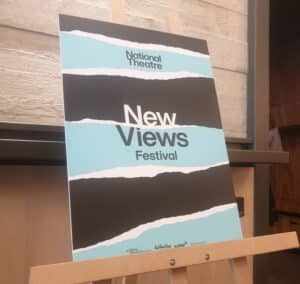 Adithya’s mentor, Andrew Muir, has had plays produced throughout the UK and in recent years his work has been performed at the National Theatre’s Connections festival, at Soho Theatre and on the BBC. His assessment of Adithya’s play described it as “a joyous road trip of a story, in which both father and son are brought back together again following the devastating loss of their wife and mother respectively.
Adithya’s mentor, Andrew Muir, has had plays produced throughout the UK and in recent years his work has been performed at the National Theatre’s Connections festival, at Soho Theatre and on the BBC. His assessment of Adithya’s play described it as “a joyous road trip of a story, in which both father and son are brought back together again following the devastating loss of their wife and mother respectively.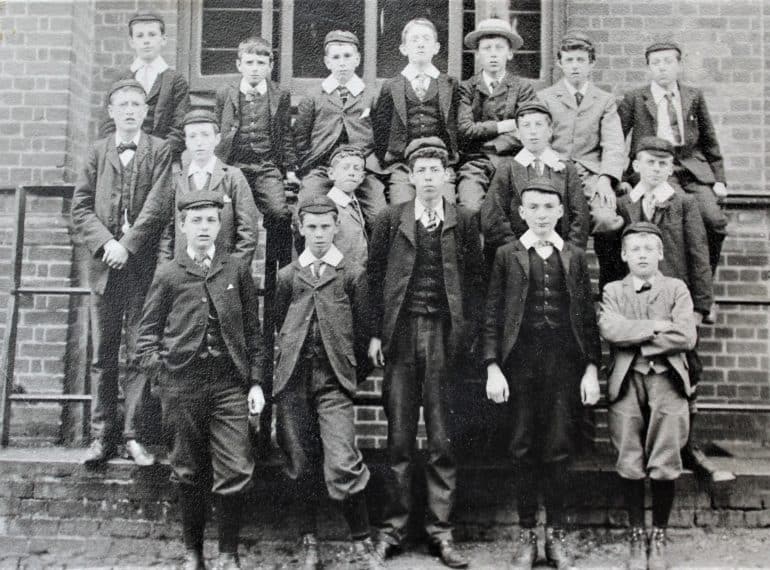
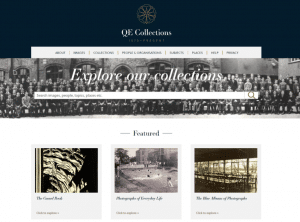 Guests at the public evening ‘town hall’ event, including Old Elizabethans and others with an interest in local history, were given a virtual guided tour and shown how to get the best out of the extensive high-quality online assets spanning more than four centuries.
Guests at the public evening ‘town hall’ event, including Old Elizabethans and others with an interest in local history, were given a virtual guided tour and shown how to get the best out of the extensive high-quality online assets spanning more than four centuries.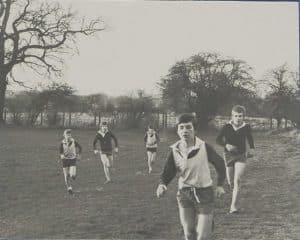 “I am very excited that we are now able to share QE Collections with a wider audience.”
“I am very excited that we are now able to share QE Collections with a wider audience.”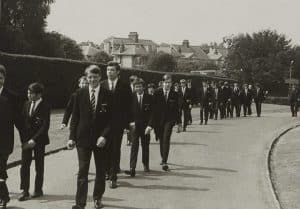 “We are constantly putting new material online, so the highlights would be different if I did this event in a few months’ time, or even next month,” Mr Bowyer added.
“We are constantly putting new material online, so the highlights would be different if I did this event in a few months’ time, or even next month,” Mr Bowyer added.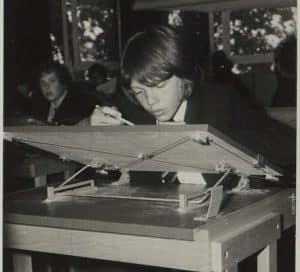 QE Collections uses professional digitisers to ensure its digitised files are of very high quality and has employed an industry-standard digital preservation system to ensure long-term availability for these digitised files, Mr Bowyer said, adding that while digital files are excellent for improving access, they are harder to preserve than physical objects, as digital storage media can become obsolete and data can become corrupted.
QE Collections uses professional digitisers to ensure its digitised files are of very high quality and has employed an industry-standard digital preservation system to ensure long-term availability for these digitised files, Mr Bowyer said, adding that while digital files are excellent for improving access, they are harder to preserve than physical objects, as digital storage media can become obsolete and data can become corrupted.